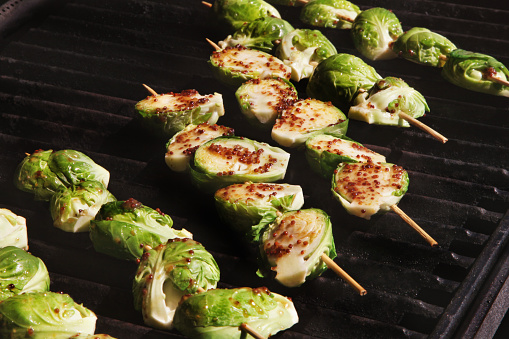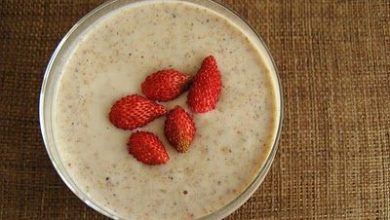How to cook Brussels sprouts? 3 delicious recipes

Brussels sprouts, like many other vegetables, are often overlooked and undervalued in cooking, wasting their full potential for flavor, texture, and beneficial properties. For this same reason, it is necessary to investigate much more in everything that it offers in very different dishes.
One of the greatest advantages of Brussels sprouts, would be its versatility in regard to cooking modes and combinations, where it can take part either as the protagonist or as a side, highlighting in a unique way its flavor and that of any other ingredient that form part of the recipe. There are several ways to prepare Brussels sprouts, as well as a previous cleaning necessary to cook it that does not take long to carry out.
Benefits and properties of Brussels sprouts
Although they do not have much prominence in most kitchens, Brussels sprouts offer very different vitamins and essential nutrients for more people. Each of these properties provides unique benefits to the body that are just another reason to integrate Brussels sprouts into your daily menu.
In the first instance, Brussels sprouts have a large amount of vitamin C in their composition, being a great source of it. On the other hand, like many other vegetables, it also has fiber and minerals of great importance, such as calcium and iron, as well as lower amounts of vitamin A, being in general a good way to obtain some of the most essential nutrients.
Similarly, the fact that they have a large amount of sulfur stands out, which makes their flavor unique, characteristic and intense, as well as their smell.
Due to its benefits, it is advisable to consume two to three cups of Brussels sprouts per week, added to different recipes or even in the same joint dish.
Previous preparation
As indicated, Brussels sprouts require prior cleaning before being used in the kitchen, this to remove any traces of dirt or impurities that may have adhered before or after harvesting them.
To begin cleaning the Brussels sprouts, the parts that will not be used must be removed; These are the base (which stands out for its hardness) and the leaves that are withered; When this has been done, these parts are discarded.
By removing these pieces, the cabbage will cook much more evenly, when it is time to cook; in addition to facilitating other types of preparations.
It is also necessary to wash the cabbages with plenty of water, delicately carving the outside of each one by hand, trying not to damage any of its leaves or causing them to fall apart; that is, cabbages need to be thoroughly cleaned without causing damage of any kind by using excessive force.
When this has been done, it is also recommended to make a shallow X-shaped cut at the bottom of each cabbage; With this, it will be easier for the heat of cooking to penetrate the leaves and cook them evenly.
Recipes for cooking Brussels sprouts
Among the many diverse alternatives of dishes with this vegetable, we can count:
Grilled skewers
Its preparation is quite simple and requires:
- Half a kilogram of Brussels sprouts.
- Garlic.
- Salt.
- Black pepper.
- Extra virgin olive oil.
Once the cabbages are clean, they are placed for one or 2 minutes in plenty of boiling water, this with the intention of clarifying and cooking them correctly. If you do not use water to cook the cabbages, you can also cook them in the microwave, paying close attention to the time you use.
With the cooked cabbages, proceed to skewer them on a wooden toothpick. On the other hand, the garlic must be minced and ground, mixing it with olive oil, adding salt and pepper to taste. Once the mixture is ready, it will be spread over the cabbages on skewers before being placed on the barbecue or grill, cooking over high heat until toasted.

Lyonnaise Brussels Sprouts
The ingredients of this dish are:
- Half a kilogram of Brussels sprouts.
- Butter.
- Onion.
- Salt.
- Black pepper.
- Water.
The prepared cabbages should be placed in a saucepan containing salt and boiling water, cooking them for about 20 minutes. The black pepper must be added to the water and the onion must be cut to comply with the same. After adding the onion, it is time to add the butter, cooking until the time is up.
Once the 20 minutes have passed, the sprouts are drained and cooled so that they no longer cook. In a frying pan or griddle, fry the cabbages, previously cooked, with butter. Once golden brown they are paired with small onion chunks for a great flavor combination.
Sage-flavored Brussels sprouts
In this recipe it is necessary to have:
- Between 20 and 25 Brussels sprouts.
- Olive oil.
- Salt.
- Butter.
- Fresh sage leaves.
When they have been cleaned, instead of making an X-shaped cut at the bottom, each cabbage should be cut in half, proceeding to cook them in a pan, ensuring that the flat bottom is the base of the cauliflowers.
Once the cabbages are golden brown, a glass of water is added to the pan, this with the intention that they finish their cooking and loosen enough to eat them comfortably. When the water has evaporated, it will be time to remove the sprouts from the heat, adding butter and sage leaves to the pan instead, sautéing them for a moment before reincorporating the Brussels sprouts and finishing cooking two minutes later.
Brussels sprouts usually have a taste classified as sour or bitter, very similar to that of cabbage (vegetable compared to them due to their very similar physical appearance) but somewhat more subtle; The same reason why it is a perfect ingredient to be added to many different dishes, highlighting the flavors that accompany them instead of overshadowing them, creating harmony between flavors no matter how different they are.



